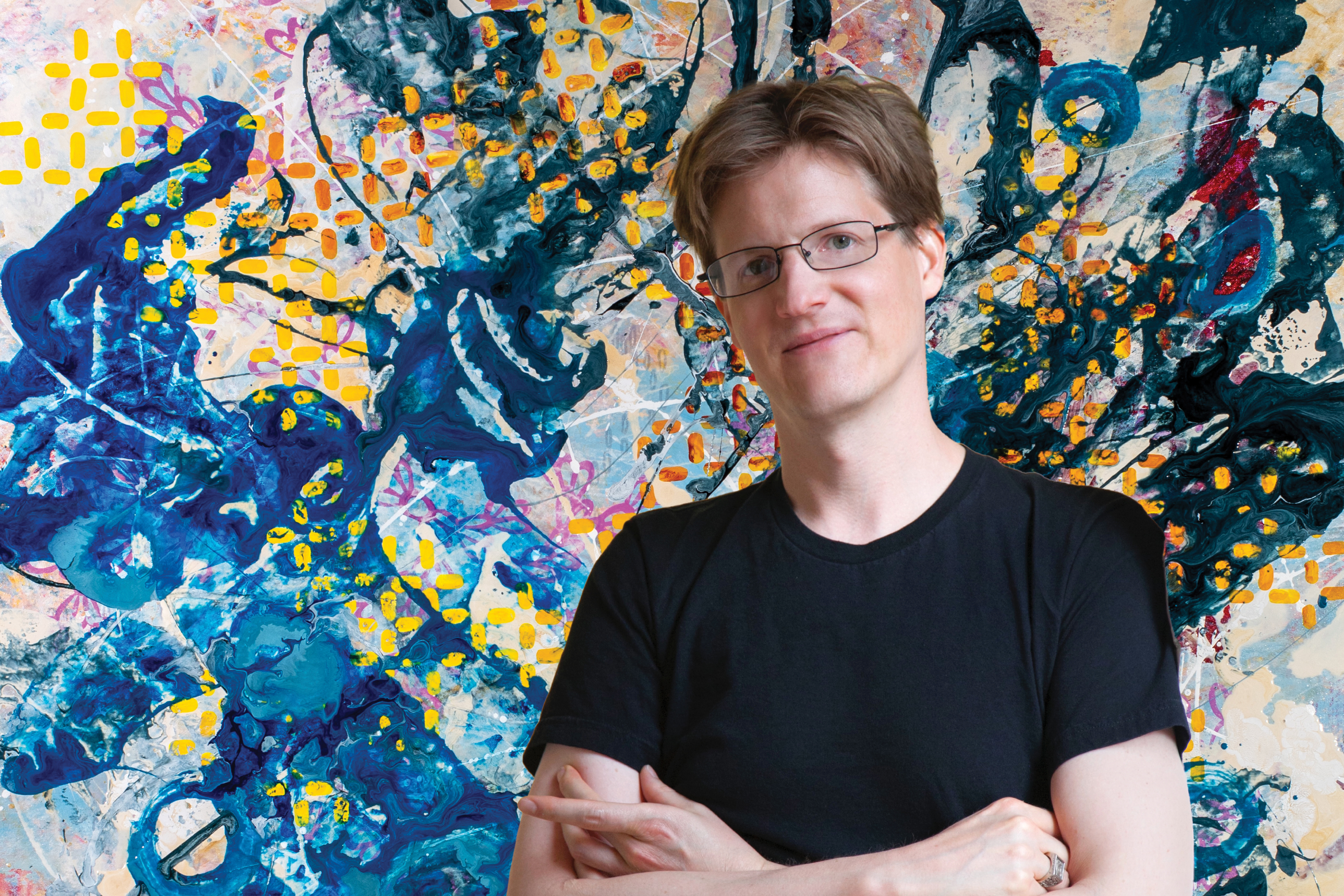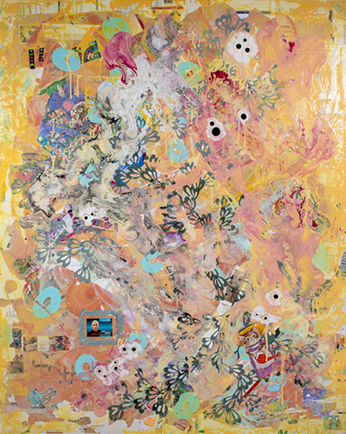Artist and Roboticist Blends Art and Science to Create Balanced Chaos
-
-
MIT Technology Review
Filed Under
Recommended

Growing up in Alaska, Blake Brasher ’03 waited for the school bus in the dark, watching the Northern Lights dance across the sky and dreaming of robots. “I always liked the idea of building a robot friend or a robot pet. It was a way to take some of the isolation away,” he says.
Now Brasher works as a senior staff electrical engineer at Boston Dynamics, the company that pioneered doglike robots similar to the virtual pets he envisioned as a boy. He also pours his passion into a career as a visual artist, creating swirling abstract paintings inspired by both nature and science. “Quantum entanglement and how the inside of an atom works are as much a part of nature as an ocean vista,” he says. “Engineering and visual art both involve abstract problem-solving. The difference is in engineering you know the target, while in painting you don’t know what you’re going to get until you get there.”

Brasher, who came to MIT in 1997, worked as an undergraduate researcher in Cynthia Breazeal’s Personal Robots Group at the Media Lab, and studied video art and painting as he earned his degree in visual arts.
After graduation, he started as a technician at Boston Dynamics and set up makeshift art studios in Somerville basements, where he transitioned from figurative to abstract painting. “Once I gave myself permission to focus on abstract work, it opened everything up—it felt freeing and authentic,” he says.
Brasher now lives with his partner and two young children in Harvard, and works three 10-hour days at Boston Dynamics prototyping robotic sensors, leaving the rest of the time for family and the studio. Over the years, he’s participated in artist residencies in New York, Italy, Romania, and France and exhibited his work as a member artist of the Bromfield Gallery in Boston’s SoWa district.
Since he earned his master’s in fine arts at Lesley University in 2022, his career has taken a leap forward with representation from the Chase Young Gallery, which has brought him more exposure. His current work uses a variety of materials, including acrylics and watercolors, to create layers of “chaotic motion” that both reveal and expose the patterns swirling underneath. He says the “many worlds” theory of quantum mechanics is one inspiration for his attempt to capture multiple realities at the same time on a two-dimensional surface. “There’s a sense of resolution I am seeking,” he says. “You have to knock things out of balance before putting them back together.”
This story also appears in the May/June issue of MIT Alumni News magazine, published by MIT Technology Review.
Illustration. Images courtesy of Blake Brasher







